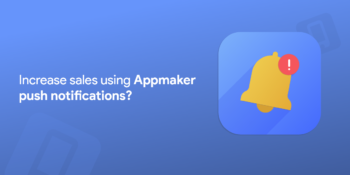Product out-of-stock circumstances are one of the most daunting and aggravating problems that business owners and customers deal with during mega-events such as BFCM and holiday sales.
Customers are dissatisfied because they cannot order their preferred goods during the sale, and sellers are dissatisfied because they cannot turn a visitor into a buyer.
Thankfully, there are several straightforward solutions for such circumstances. By adhering to them, you can be sure that every stakeholder will be happy in the end.
Here are 6 such ways that were specially chosen for you:
1. Consider the demand
To understand the most anticipated products at any significant sale events, consult data from prior years. Find out the current product types that are in high demand as well as recent developments in your sector. Make a thorough note of all such products, then fill your inventory with them. It’s usually preferable to have unsold inventory than dissatisfied customers, so if at all possible, stock a little more than you anticipate.
Pro tip: Before any large sale event, spend some time on social media to see what your target consumers are looking for. Keep enough of those products on hand to prevent running out of stock.
2. Enlist them
A major sale is a fantastic time to introduce new products. Shoppers are most engaged and willing to spend money around this hour. Another benefit of introducing new products during a sale is this. By estimating the number of consumers who will genuinely be interested in buying that goods, you can prevent instances where there are no longer any available stocks (for that product).
Get consumers to express their interest by filling out an online form or liking a social media post in addition to building anticipation for that product before its release. This will give you a good indication of how many prospective buyers there are for that particular product. You can stock an appropriate amount of that product based on its value.
3. Keep an eye on your stock
Even though you could already be doing this on regular days, having a second set of eyes check on your stock when there are major sales is really helpful. During a large-volume sale, the likelihood of human mistake in inventory management is relatively high. This may lead to an out-of-stock circumstance that could have been avoided. When the correct time comes, a dedicated resource can notify you, allowing you to replenish the inventory in time.
Pro tip: Set the quantity threshold restriction to 20% if you have an inventory management system. When a product’s stock falls below 20%, the system will automatically notify you.
4. Extend the shipping window
This is a clever little tip to make sure your consumers are satisfied when browsing your catalog. Simply extend the product’s shipping time instead of marking it as out-of-stock. By doing this, you can make sure that the visitor becomes a buyer and that they are not let down by the dreaded out-of-stock notification.
A word of caution: only do this for things you know can be refilled in a timely manner. The last thing you want is for a product to not be delivered, increasing client unhappiness.
Add a “notify me” button to the product page if you are uncertain about its availability. Whenever the goods becomes available, the user who clicks on that button will be alerted instantly.
5. Reduce the prominence of out-of-stock items
Pushing out-of-stock items to the bottom of the listing page or search results is another technique to handle them. By doing so, you are effectively lowering the visibility of these items, ensuring that no other incoming customers to your store are unduly exposed to out-of-stock items. Only those who are actively hunting for that particular product will be aware of its absence. Once you have adequate stock, you might later push the product back to the top.
6. Introduce comparable products
This is another straightforward approach to guaranteeing that your clients are protected from out-of-stock merchandise. To replace the items that are running out of stock, simply show comparable products to the visitors (let’s say, in terms of functionality). Two advantages result from this. One benefit is that you’ll prevent the original product from abruptly running out of stock, preventing an unfavorable out-of-stock scenario. Two, as you sell the replacement products—which otherwise would not have been sold—your sales will increase.
A worrying statistic is that eCommerce sites that feature out-of-stock products might experience a sales decrease of more than 58%. Only during a significant sale event will the number increase. By adhering to the straightforward advice presented in this piece, you can avoid getting into this scenario.
To Conclude– With various well-known solutions, Appmaker offers plug-and-play connections that make it easy to handle out-of-stock situations. Click here for more information on these integrations.










No Comments
Leave a comment Cancel